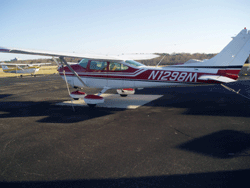The following ten commandments were published in the May, 1939 issue of Aviation (which later became Aviation Week & Space Technology). How many are still relevant to pilots today?
DON’T SHOW OFF. Zooming over your girl’s house, or turning to wave good-bye to her on a take-off is an easy way to terminate your romance suddenly. (Sounds like “Maneuvering flight” doesn’t it?)
KNOW YOUR LIMITATIONS. Don’t try to perform the impossible with yourself or your ship. Don’t be afraid to take a little extra time to check yourself out on a strange ship. Especially, find out when it spins, and why, so you wont be surprised some day. (Personal minimums?)
DON’T TAKE THINGS FOR GRANTED. No one will resent it if you personally check your fuel or your controls before take-off. It is the mark of a good pilot. (Proper preflight inspection?)
GET AWAY FROM HOME. You may know your own airport well enough, but making practice landings in strange airports is a good form of insurance. As soon as you are qualified, get all the cross-country you can. Learn to look for other wind indicators than a windsock. (Maintain currency and build experience?)
WATCH YOUR WEATHER. Even the best of the airline pilots spend a lot of time looking at weather maps and flight conditions before every take-off. Stay on the ground when things look doubtful. (Complete weather briefings and avoid VMC into IFR ?)
STUDY THE REGULATIONS. Become familiar with the rules that have been drafted for your safety and obey the intent as well as the letter of the law. Most accidents can be traced to violations. (1939 or 2014- nothing new here except a lot more accidents and resulting regulations!)
CHOOSE YOUR FRIENDS, especially when it comes to listening to hangar flying stories. A lot of flying feats you hear from the old-timers never happened anyway, and besides, possibly someone may be pulling your leg. (Naw! Really?)
THINK AHEAD: Take time out to consider all possible things that may happen to you and decide in advance just what you will do under all circumstances (Preflight preparation, situational awareness, workload management?)
SET A GOOD EXAMPLE. You may be young at this business, but remember there are those younger who look to you for guidance. (You never know when you are a role model and how your approach to risk may influence them!)
FLY HIGH – FLY FAST – KEEP YOUR NOSE DOWN ON TURNS!
(Low altitude, slow flight, high angle of attack turns were not good in 1939 aircraft and they are not good in today’s either!)








